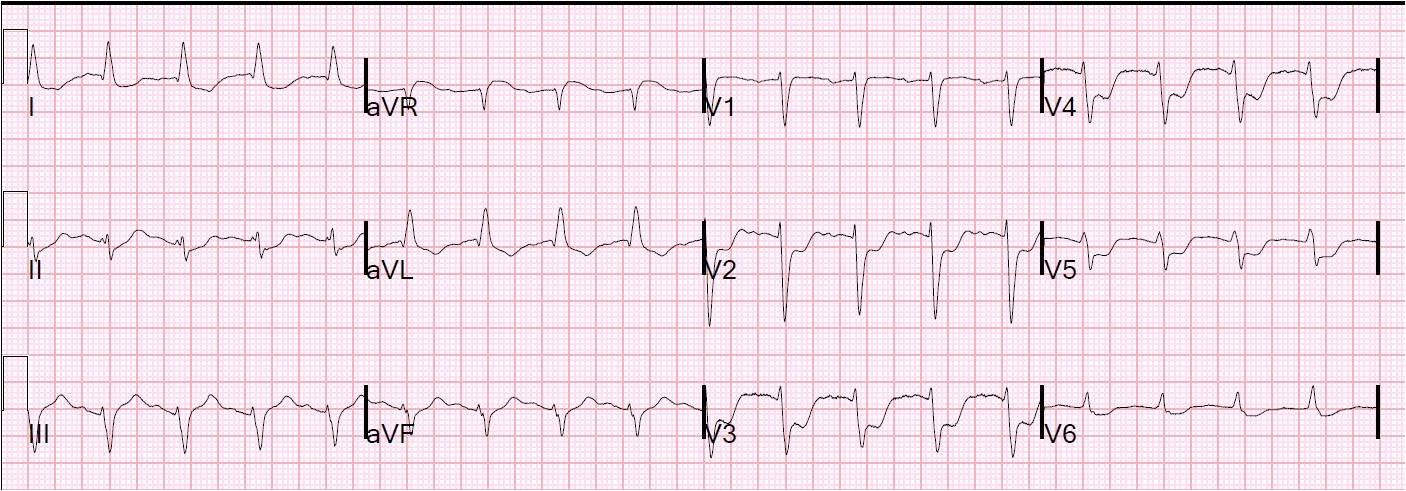A 76 yo male had Chest Pain followed by a cardiac arrest. He was resuscitated in the field, and had hypotension annd electrical storm in the ED.

There is a QRS duration of 120 ms, with a wide R-wave in lateral leads (but also a Q-wave). This is either an incomplete LBBB or a very wide left anterior fascicular block. There is concordant ST depression in precordial leads.
.
Posterior leads were applied (V4=V7, V5=V8, V6=V9) for the following ECG:
 There is now clearly concordant ST elevation. Whether LBBB or not, ST elevation of 0.5 mm or more in just one lead is enough for the diagnosis of posterior STEMI.
There is now clearly concordant ST elevation. Whether LBBB or not, ST elevation of 0.5 mm or more in just one lead is enough for the diagnosis of posterior STEMI.
.
Electrical storm continued, with 8 defibrillations.
.
Unfortunately, there was a storm outside, too. A huge snowstorm, and the cath lab personnel could not get to the ED fast enough.
.
Tissue plasminogen activator was given and 30 minutes later the patient stabilized with a BP of 130/70. Echo showed a posterolateral wall motion abnormality. Later cath showed 3-vessel disease but the exact culprit could not be established. The troponin I peaked at 40 ng/ml.
.
Unfortunately, in spite of therapeutic hypothermia, the patient died of cerebral anoxia.
